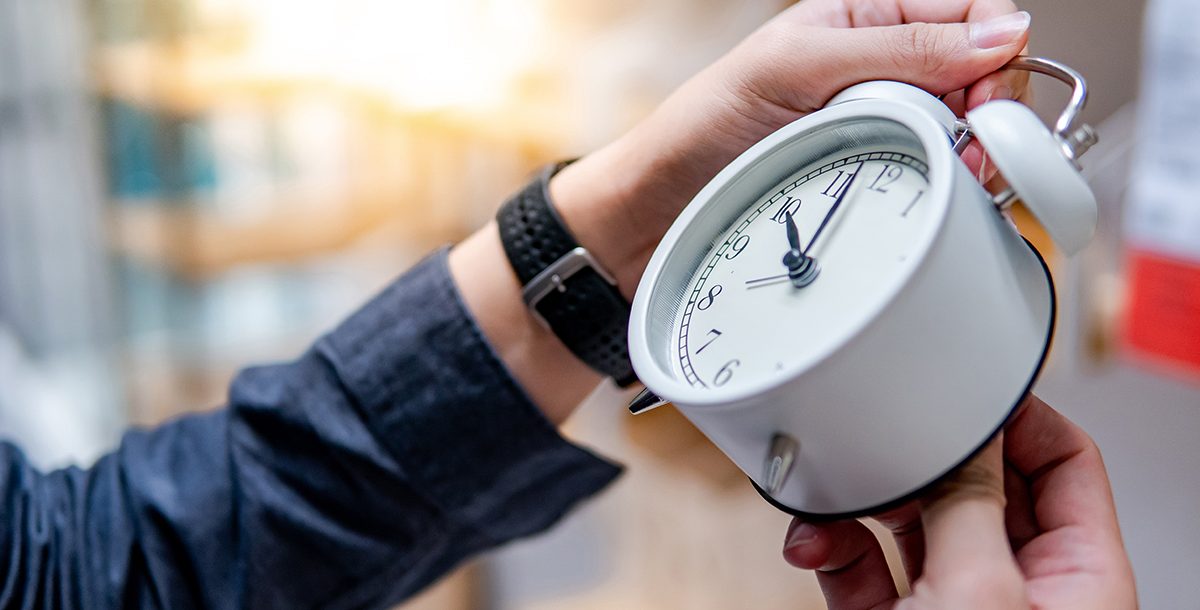Every March, daylight saving time begins and we “spring forward.” We set our watches and clocks ahead one hour. And while being robbed of an hour’s time may seem like a pesky inconvenience, it’s much more than that.
By upsetting the body’s internal clock, there can be several negative effects of daylight saving time on the body.
Spring forward health issues can include:
- Brain fog
- Increased risk for heart attack or stroke
- Irritability
- Low mood
Springing forward can also affect your safety, as research shows a rise in fatal traffic accidents coincides with the change to observe daylight saving time.
Fortunately, there are things you can do to counter the effects of the spring forward time change. Take advantage of the following helpful tips.
Plan ahead
For a world that’s already sleep-deprived, it can be tough to lose an additional hour of sleep during the night. One of the best ways to deal with daylight saving time-related sleep problems is to plan ahead.
About a week before the time shifts, move your bedtime up by 15 to 30 minutes. To guide your brain into an earlier bedtime, dim the lights, take a warm bath and put on your pajamas about 45 minutes earlier than normal. These activities alert your brain to begin releasing melatonin. This is a hormone made by the pineal gland that helps you fall asleep and stay asleep.
Wake up earlier
In addition to going to sleep earlier, you’ll want to wake up earlier, too. When you move up your bedtime, make sure you also adjust your alarm clock. Set it 15 to 30 minutes earlier than normal to help minimize the effects of the time change.
Make the most of natural light
Just as dimming the lights prepares you for bedtime, sunlight helps get you out of bed in the morning. For a few days before daylight saving time starts, leave your bedroom blinds or curtains open as you fall asleep at night. In the morning, the natural sunlight will signal to your brain that it’s time to wake up and get on with your day.
Practice good sleep habits all year long
If you already have good sleep habits, you’ll have a much easier transition during daylight saving time when you spring forward and fall back.
To get good sleep all year long, take advantage of these strategies:
- Avoid alcohol at least two hours before bedtime.
- Avoid working out at least two hours before bedtime.
- Consider making your bedroom a sleep-only zone.
- Don’t drink caffeinated beverages after lunchtime.
- Invest in a comfortable and supportive mattress.
- Keep your nightly bedtime routine consistent.
- Make use of sleep aids like masks, earplugs or relaxing sound machines.
- Set your thermostat between 64 and 68 degrees Fahrenheit.
- Try to go to bed and wake up at the same time every day.
- Turn off your TV and put away your tablet or cellphone at least 30 minutes before getting into bed.
- Use a nightlight for middle-of-the-night bathroom visits.
Consider the positive effects of daylight saving time and spring forward
Another way to counter the negative effects of springing forward for daylight saving time is to look at the bright side. Daylight saving time comes with some benefits, too. If you enjoy outdoor exercise after work or evening entertaining, you’ll have several hours of daylight before the sun goes down.
Learn about the primary care services we offer at Bon Secours.





